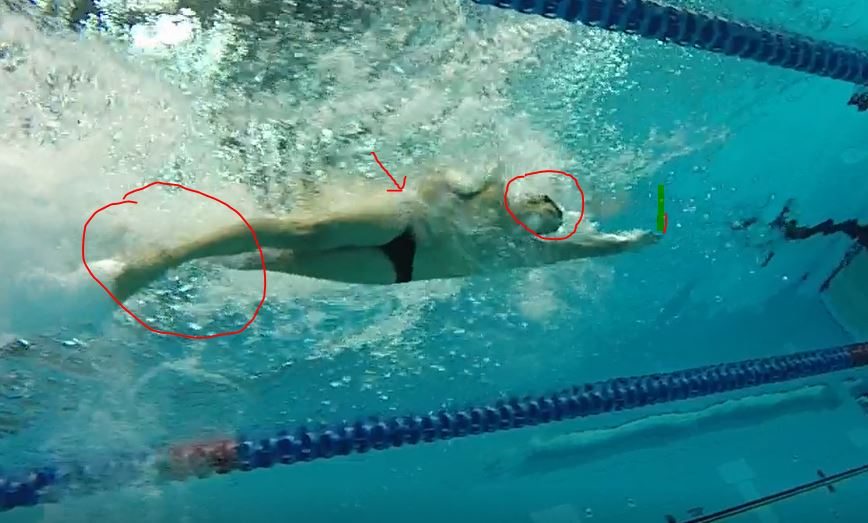In this article we will endeavor to compare professional competitive swimming, WEST swimming and other swimming methods.
We will discuss five main parameters when swimming freestyle
- The stretch depth
- Legs
- Switching the hands
- Breathing (position and timing)
- Rolling and rotation of the body
What does one want when he starts swimming? What are his goals?
Everybody says they want to feel good, Keep a sportive lifestyle, avoid injury and if possible improve their swimming speed. Although they always mention speed last, people undoubtedly expect to get better, fast!
Before we begin it’s important to understand something about the WEST(Water World Swimming Therapy) technique – when we follow it, we swim as if we had a herniated disc in our neck in the C6 – C7 vertebrae, and in our lower back in the L2 and L3 vertebrae. Regarding any swimmer in this way makes us realize 3 things:
- No sudden moves
- Our style must be according to our built
- Most of the drills done by Michael Phelps are nice to watch but are probably wrong for us, and even if we could perform them will make us swim much slower.
So what are the differences between WEST technique and other techniques regarding those five parameters?
- The stretch depth
In competitive swimming you stretch your hand 5 cm below the water line, in the clear purpose of pulling as much water as possible. In other swimming methods we are told to stretch our hand in a 45 degree angle downward, and that raises the question: why miss out on so much pulling area? Why not stretch closer to the water line?
In WEST technique we think about elongating the lower back and finding the optimal stretch depth according to the swimmers flexibility. For example, a swimmer who is not so flexible who will try to stretch his hand close to the water line, the way they do in competitive swimming, will sink, and instead of stretching his body and lower back will stop himself in the water.
Stretching in 35cm from the water line, if his flexibility is Medium will help him glide longer, float better, get less oxidized and eventually much faster.
**Stress in the shoulder and neck makes us sink, loosen your body and you will float.
- Freestyle Legwork- how to kick in the water
In competitive swimming the talk today is more and more legwork, so much so that if 20 years ago only 5% of the swimming practice had been legs, today, because of the importance of the dolphin kick, some swimmers dedicate 30% of the workout to legwork, or, as many coaches say: It’s all about the legs.
In competitive swimming you make 4 to 8 leg movements to every 2 hand movements.
In WEST the legs don’t work at all, but are dragged, or, in other words, only the stretch creates the leg movement, much like a locomotive causes the cars to move.
We realized that people over 18 who drag their legs both release their lower back and swim faster.
- Switching the hands
In competitive swimming you insert your hand into the water forcefully, and the switch resembles a windmill, in order to use the elbow lift to better “lean” on the water. In other techniques one hand waits for the other.
In WEST we saw that if we swim in those two ways it creates pressure to the neck.
So in WEST the elbow leaves the water only when the front arm is stretched slowly all the way. The body rolling is created by the stretch, and it alone causes the hand to exit.
- Breathing
Both in competitive swimming and in other techniques there is a constant rotation, and the main goal is to breath as fast as possible to keep the head in the flow line for as long as possible, which is excellent for competitive swimming and especially for short distances. The body rolls to a 45 and even 55 degree angles on breathing.
As opposed to this, in WEST we roll to 90 degrees to make sure there’s zero neck and lower back work. With the years we have learned that when we neutralize the neck and the lower back the body takes double the time to oxidize, and so you can swim greater distances at a higher speed.
Releasing the neck while swimming also helps dissolve tension and stress while swimming.
- Body roll and rotation
Both in competitive swimming and in other techniques you roll the body hard, you use the core muscles and work your pelvis with every move.
Try to imagine for a moment that you have lower back pains and you create a swift crossing of the body…
The sharp pain you’d feel would be intolerable.
In WEST swimming technique you are not allowed to work your pelvis. You have to stretch your arm really slowly in the right depth and at the angle that is right for you, a thing that on its own creates the rotation without manipulation.
***
There are of course 15 more differences between WEST & competitive swimming and other methods, such as how much we bend the arm when pulling, where to end the pull in freestyle, height of the head, how to breathe and so on…
But after treating and rehabilitating thousands of people from all over the world we have come to the conclusion that the basis is understanding that if you release your lower back (the body’s energy center) and the neck (the center of the soul, emotion and stress), you both treat your lower back and the overall balance of your body, and swim a lot faster.
Every individual is special, and therefore WEST is personally tailored to each and every one.



